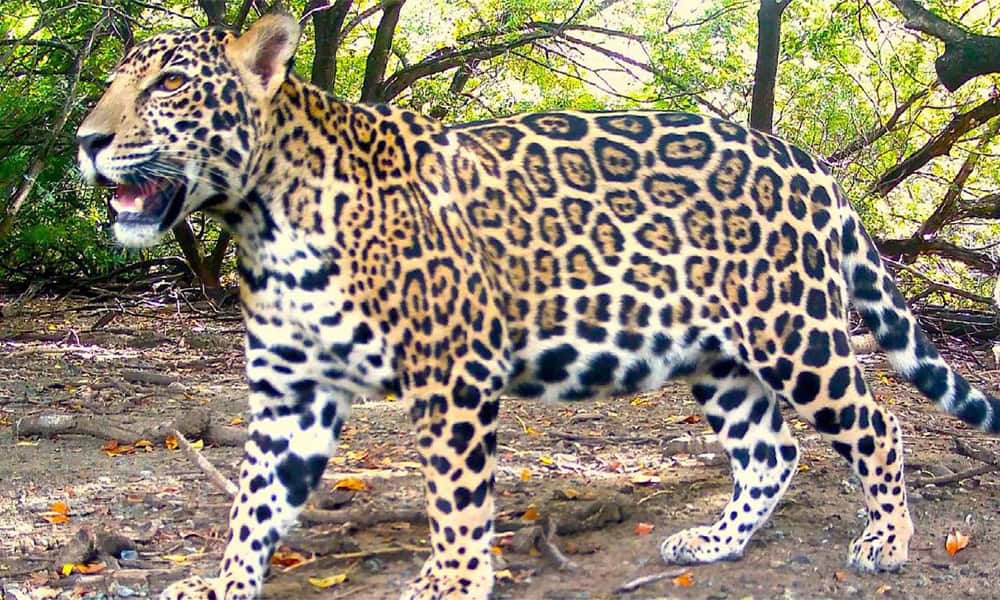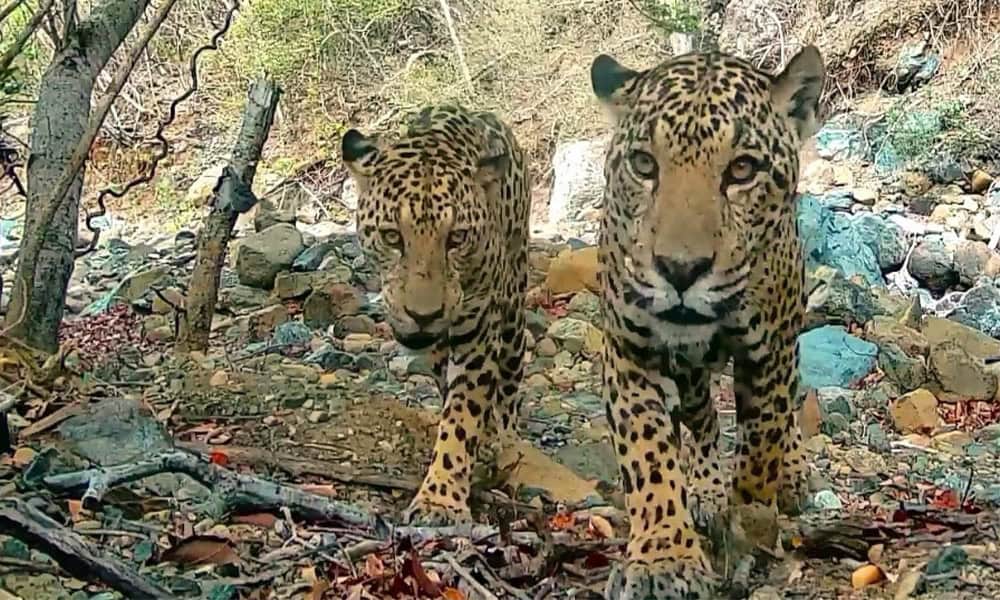A few days ago, around six o’clock in the evening I was doing regular dad stuff, yelling at kids to turn down the volume on their iPads and chatting with my wife, when my phone declared I had a new message on WhatsApp with a loud ping. The phone revealed a new message in the Jaguar Group. The Jaguar Group consists of a few jaguar researchers who share information amongst themselves, and I must confess I’m extremely proud to have been included in it a few months ago.
The administrator of said group, Luis Fonseca, had sent a message saying there existed the possibility of accompanying him to check his camera traps which are placed on forested beaches in northern Guanacaste where jaguars are known to prey on sea turtles which come onto the shore to lay their eggs.
After a quick call with Luis and the gracious go ahead from my wife, who I was surprise abandoning with the kids in the middle of a work week, I confirmed my attendance. The plan was vague but interesting. Here’s what I knew, I needed a tent, a pair of crocs, and a few items of clothing packed into a drybag. I was to catch a boat at 6am, travel to beaches located in a national park, review camera traps, and then end up on an island that I’d never been to before to apparently sleep in a tent. Also, Luis specifically confirmed that I knew how to swim. So maybe I was jumping out of the boat? I wasn’t sure.
At 6am the day of the adventure, I boarded a small boat with a team of jaguar and sea turtle researchers. We made our way north eventually arriving at the first beach which was being monitored for jaguar activity. We rode a wave like a surfer into the small mouth of a hidden estuary and motored a decent distance until we finally landed on the back side of the beach.
We spent a few hours on the beach reviewing camera traps where the forest met the sand which were full of jaguar videos along with a whole host of other species. After installing a few new camera traps, we waded out to the waiting boat (thus the need to know how to swim) and left for the next beach.
Just as we were getting close to the second destination, what was once a sunny day turned dark and it started to pour. This beach had an island a small distance away and as we approached the waves crashed on underwater rocks that stretched from the mainland to the island. The captain exclaimed that we needed to be careful of the hidden rocks and as the rain poured, the thunder struck, and a wave rose over the submerged rocks rising to a point significantly higher than our boat, a thought occurred to me that pops up sometimes when I’m on adventures such as these, it’s some combination of, ‘This probably isn’t the safest thing I’ve ever done’ and ‘Who’s letting me do this?’.

In the end, we caught a wave at the right time and drifted safely over the rocks. After a short wait, the dark clouds and rain floated out to sea, and we were once again left with a beautiful day. We waded out of the boat onto a shore where lush, forested mountains butted up against the sea in a manner that reminded me of Hawaii.
We immediately began searching the forest along the beach for camera traps and encountered long lines of jaguar tracks in the sand as well as heaps of sea turtle bones in piles along the forest’s edge. We reviewed several camera traps, each one full of jaguar activity. Luis knows the local jaguars so well that he was spouting the names of different individuals after a quick glance at their spot patterns while reviewing the videos on this phone.
After retreating once again to the boat, we raced against the next line of storms, arriving on a sandy beach on a nearby island. We were immediately met by the park ranger staff who manned the two-story station nestled on a hill above the beach and they helped us haul all of the equipment to the station. The rest of the trip was focused on the sea turtle researchers who presented information about the different species of sea turtles native to the area and completed some hands-on nest monitoring activities with the park rangers on the beach.
I was invited to participate in the activities, I was fed well the whole time by the guy whose job it seemed to be to keep everyone’s bellies full, and I even got to ditch my tent for a blowup mattress positioned on the station’s second story porch. Not to be outdone by the initial boat ride, the next day’s boat ride included flying fish, multiple pods of dolphins, and breaching humpback whales. The whole activity was so fun and interesting that I had to write an article about it for the Tico Times.
Luis has been hard at work monitoring the jaguars that stalk these beautiful tropical beaches for over twenty years. I had assumed he was associated with one university or another, but I’ve come to find out that it’s a project that he runs himself and is always in need of more supporters. If you’re in the market for supporting conservation in Costa Rica and think jaguars roaming beaches eating sea turtles is as absolutely fascinating as I do, I suggest supporting Luis in his efforts. You can reach out to him directly at luisfonsecalopez@gmail.com or you can contact me, and I’ll help.
I do not have access to Luis’ jaguar videos so I can’t share them with you, but I did manage to take a few videos and photos of the adventure with my phone.
About the Author
Vincent Losasso, founder of Guanacaste Wildlife Monitoring, is a biologist who works with camera traps throughout Costa Rica. Learn more about his projects on facebook or instagram. You can also email him at: vincent@guanacastewildlifemonitoring.com







